Digital Orthosis Compound
DOC is indispensable in fabricating a digital orthosis. The compound is molded directly onto the area and cures to a permanent form in minutes. DOC is superior to other silicone-based products because of the dependability of the setting time.
Firm but yielding, soft yet durable, and similar in appearance, touch and resiliency to that of natural rubber.
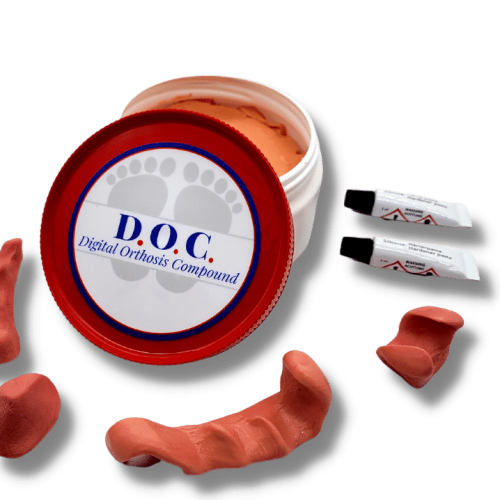
General Device Fabrication
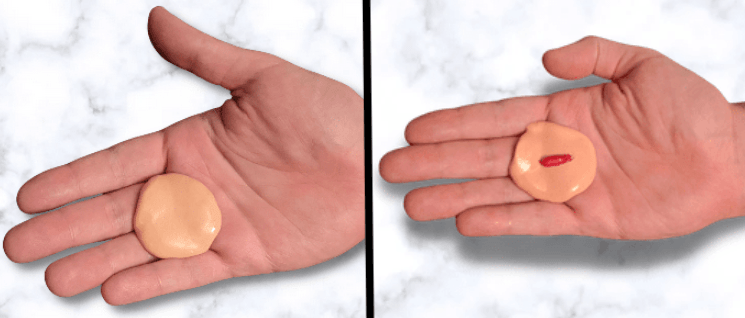
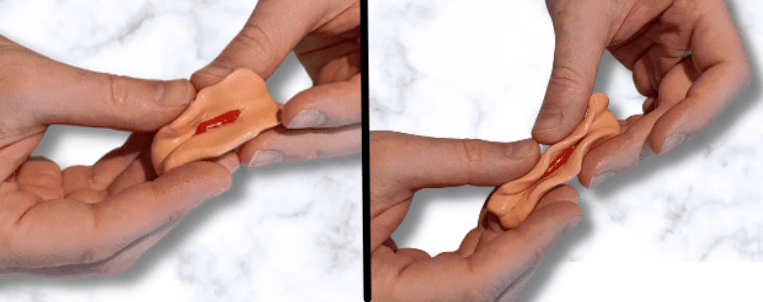
1. Estimate the amount of material needed, and mold the material into a circular flat mass.
*Always use the minimal amount to just fill the space. Most mistakes are made by using too much compound.
2. Squeeze the appropriate amount of curing agent into the centre of the mass. See below for the appropriate ration of curing agent to mass.
* Practice will make this step simpler. Too much curing agent makes the compound set too soon. Too little increases the curing time and makes for a softer device. Average orthosis, as shown in photos, takes 15 grams of material to 1.5cm curing agent.
3. Mix and gently fold material over the curing agent. Repeat folding
and kneading until a uniform colour is seen. The material will begin to harden slightly in 30-45 seconds.
Digital Orthosis Fabrication
The device pictured is representative of the shape of a digital orthosis designed to prevent acquired deformity and to return function when used with podiatric prescription orthotics. In general, the object is to minimally fill available space between the first, second, and third toes. Most devices work best if they stop at the third interspace; this allows the forefoot to dorsiflex properly during the propulsive phase of the gait cycle.
1. Wearing vinyl gloves, shape the material into its required final form (latex gloves will stick to the compound, most other materials such as vinyl will not). Position the material to the foot and shape into final form. Molding should be completed within 15-30 seconds after mixing.
Material is placed between the first interspace and under all the lesser toes with a small amount between the 4th interspace (sometimes this is omitted, especially for women who have an HD fifth and wear dress shoes).
2. To ensure comfort at this stage, have the patient stand with their shoe on. Use a knee-high stocking to cover the foot and the device with the orthotic in place. Plastic wrap can be used instead of a stocking; this slightly increases setting time.
Once the patient is standing, molding will be complete within one minute (actual curing will be a while longer).
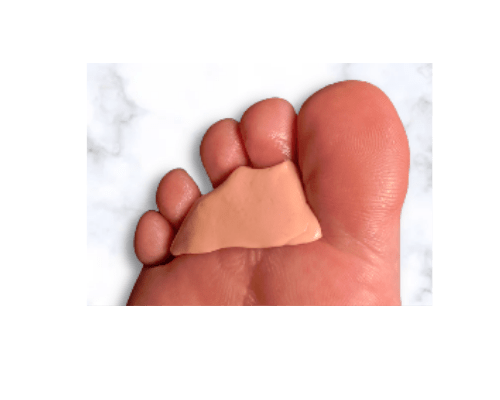
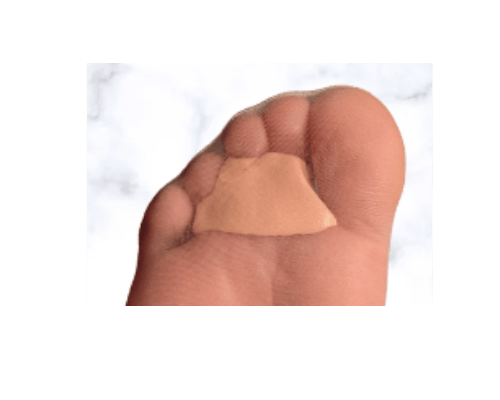
Hyperkeratotic Lesion Sub 1st Metatarsal or Medial Plantar aspect of Hallux
Add a small amount of material to the plantar aspect of the hallux. This creates a lever which relieves pressure on the area.
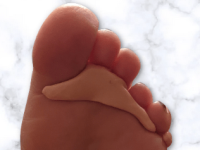
Heloma Durum Proximal Interphalangeal (joints 2-5)
Add material to dorsal proximal area of the toe to keep the shoe away from the site.
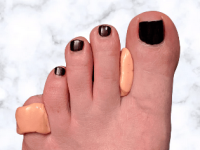
Splints
(Post operative)
Hallux Adducto Valgus correction
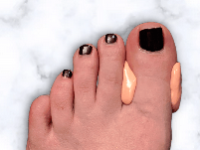
Tips
- Mix enough material so that a small amount can be retained to determine when the appliance is properly cured.
- Use a minimum amount of material. Too much causes pressure points.
- Ask the patient how it feels. If they complain that it's too thick, either grind down plantar surface, or remake with less material.
- Invoice the patient sufficiently to allow for possible remakes. Some may need several fabrications before the right appliance is achieved.
- Timing is critical: the orthosis should cure for at least 6 minutes; wait 8 minutes before cutting or trimming; wait 15 minutes before grinding. Smoothest grind is obtained with the orthosis is moistened with water.
- Adding material at a later time is possible, if you roughen up the area to be added to.
- Advise patient that the appliance may be temporarily uncomfortable (a few days). If the device is still uncomfortable after this time, they should return for an adjustment or remake.
- If the patient complains of pain due to the 5th toe pressing into the shoe, remove the material between the 4th interspace using scissors.
DOC and its uses
- Preventing acquired forefoot deformity (hammer toes, bunion, etc.). Prevention of further deformity and actual straightening of the lesser digits can be obtained when used with a prescription orthotic.
- Protective orthosis for rigid fixed deformities when surgery is not feasible.
- Post-operative immobilization devices.